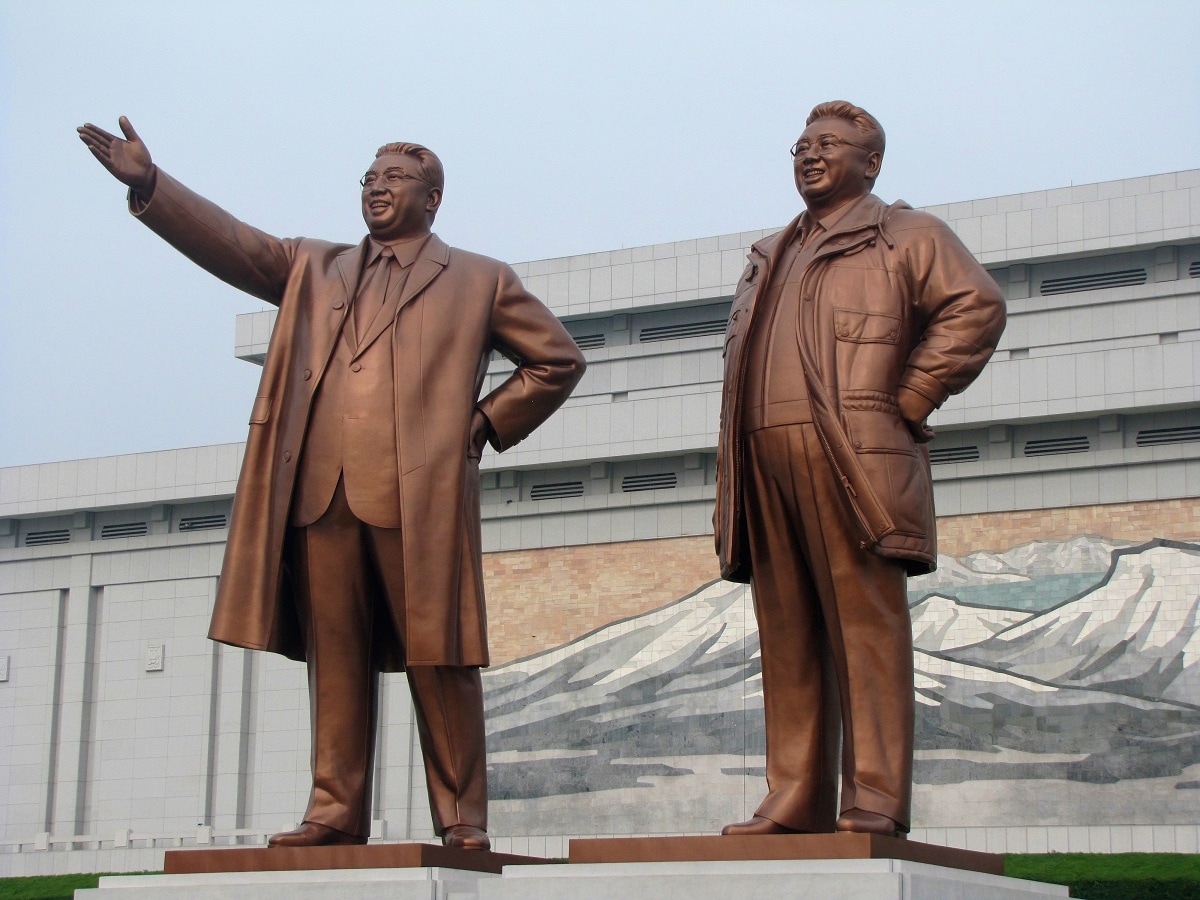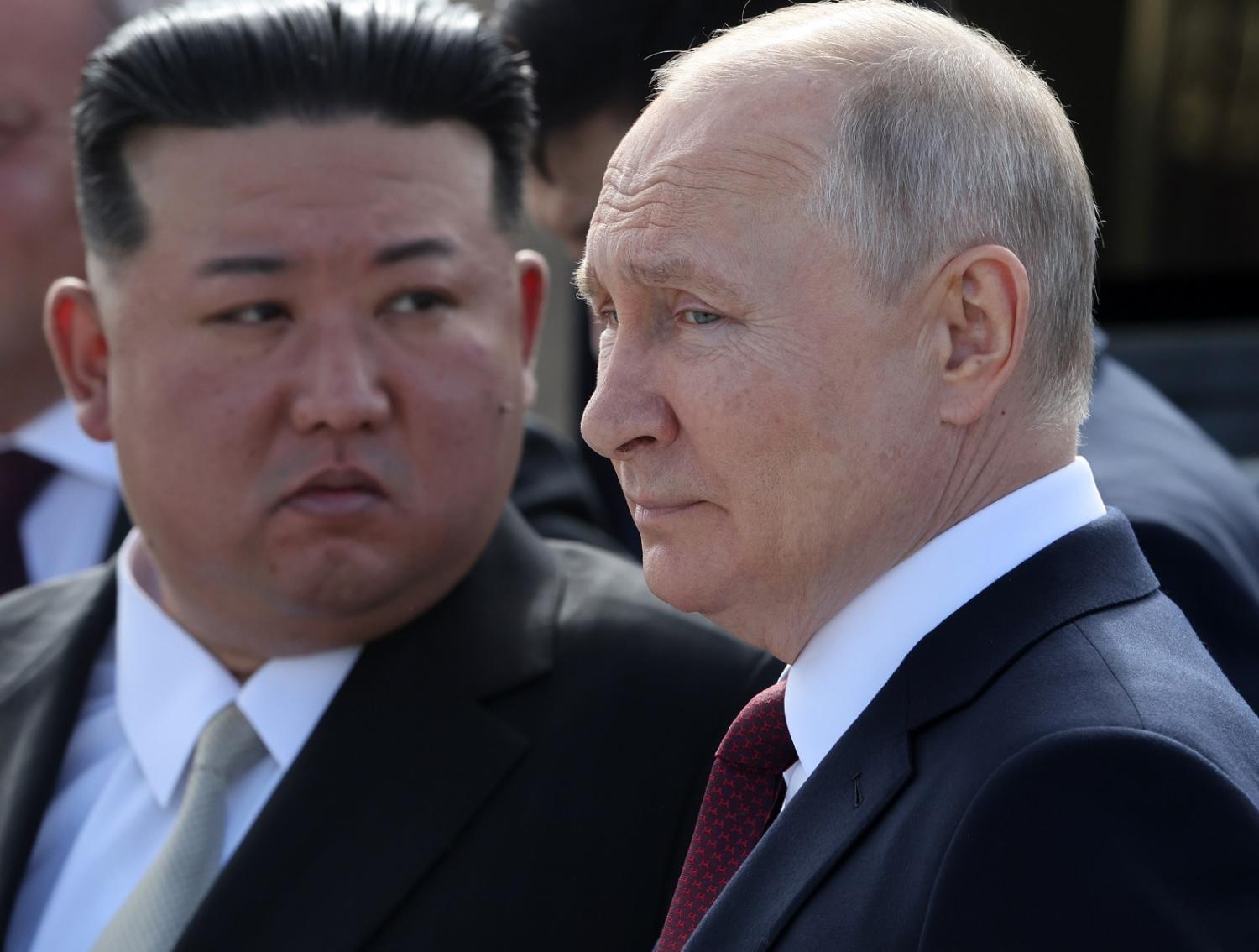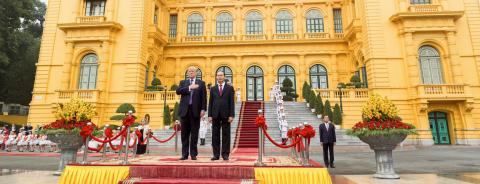In early September 2022, The New York Times published a story about Russia secretly buying North Korean artillery for the war in Ukraine. Since then, relations between the two countries have quickly grown closer, culminating in North Korean leader Kim Jong-un’s six-day trip to the Russian Far East that included a summit with Russian President Vladimir Putin at the Vostochny space centre. The Russian leader called it a statement of Russian ambitions to aid North Korea’s satellite program, through which the country also develops intercontinental ballistic missiles (ICBMs). Kim, in turn, praised Russia’s war in Ukraine as a “sacred fight to protect its sovereignty” against “Western imperialism”. North Korea is expected to sell possibly large amounts of weapons and ammunition to Russia, either from old stockpiles, new manufacturing, or a combination of both. In return, North Korea is likely asking for assistance for its weapons programs, particularly submarine technology, and possibly cash and food shipments as well.
For North Korea, the stars of history are aligning with those of geopolitics. North Korea has a vast arms industry whose products are almost entirely modelled on Soviet ones that the Russian army knows well. This goes back to the economic strategy pursued by North Korea’s founding President Kim Il-sung (1912–94), Kim Jong-un’s grandfather. After the Korean War (1950–53), the elder Kim and his allies wanted to rapidly expand the country’s heavy industry. One of the most important goals was to manufacture weapons to make the country self-sufficient in arms.
Arms manufacturing became an important economic sector from the early days of the state. By the 1960s, the country was manufacturing rifles and heavy machine guns, anti-aircraft and anti-tank weapons, among other weapons. It expanded its manufacturing capacity throughout the 1970s and 80s to include tanks, rockets and artillery systems. The military has its own economic system of sorts, supplying itself with most of the raw materials and other inputs required for arms manufacturing. Its workers are paid better than those in other industries. Even with the scarcity of resources and industrial imports during North Korea’s almost total border closure during Covid-19, military industry factories have likely been better maintained and kept operational to a higher degree than others. Estimates of the number of arms factories in North Korea vary between 50 and close to 140, many of which were constructed underground during and after the Korean War.

For Russia, the benefits are obvious. It would be close to a monopoly buyer of North Korean weapons, giving it good negotiating terms. The two countries share a land border, and North Korea’s vast military industrial structure would likely enable Russia to order large amounts of both weapons and ammunition within a short period of time, of types and models its military is already familiar with since most are modelled on Soviet prototypes. By scaling up weapons trade with North Korea, beyond buying stockpiles from North Korean warehouses, Russia would also be lending economic support to a small, volatile, and anti-American regional partner.
For North Korea, the potential benefits are even greater. Beyond possible assistance to its weapons programs, food aid or other forms of payment, the arrangement is precisely of the sort that the regime prefers with other states. It is highly transactional but underpinned by commonalities in ideology and worldview. The regime does not need to fear ideological containment and influences from Russia, as it would with any economic cooperation with Western countries. Future assistance or payment by Russia could include oil and energy resources that the regime desperately needs, perhaps including the upgrade of North Korean trade infrastructure such as the Sŭngri chemical plant near the Russian border. This facility has laid dormant since the early 1990s, and North Korea could refine potentially meaningful amounts of crude oil there.
Beyond tangible gains, the sort of economic relationship Russia might provide also fits well with Kim Jong-un’s drive to centralise control over the economy and society more firmly under the state. Military industry is already almost entirely controlled by the state, unlike many other North Korean industries, where since the early 2000s semi-privatisation has led to considerable autonomy. Firm state control over military industry lets the regime control the distribution of profits to reward politically significant classes for their loyalty.
Kim Jong-un can thank decisions taken by his grandfather decades ago for any weapons exports to Russia that may come about in the future. The Russian invasion of Ukraine may turn out to be a lucky historical break for North Korea.

